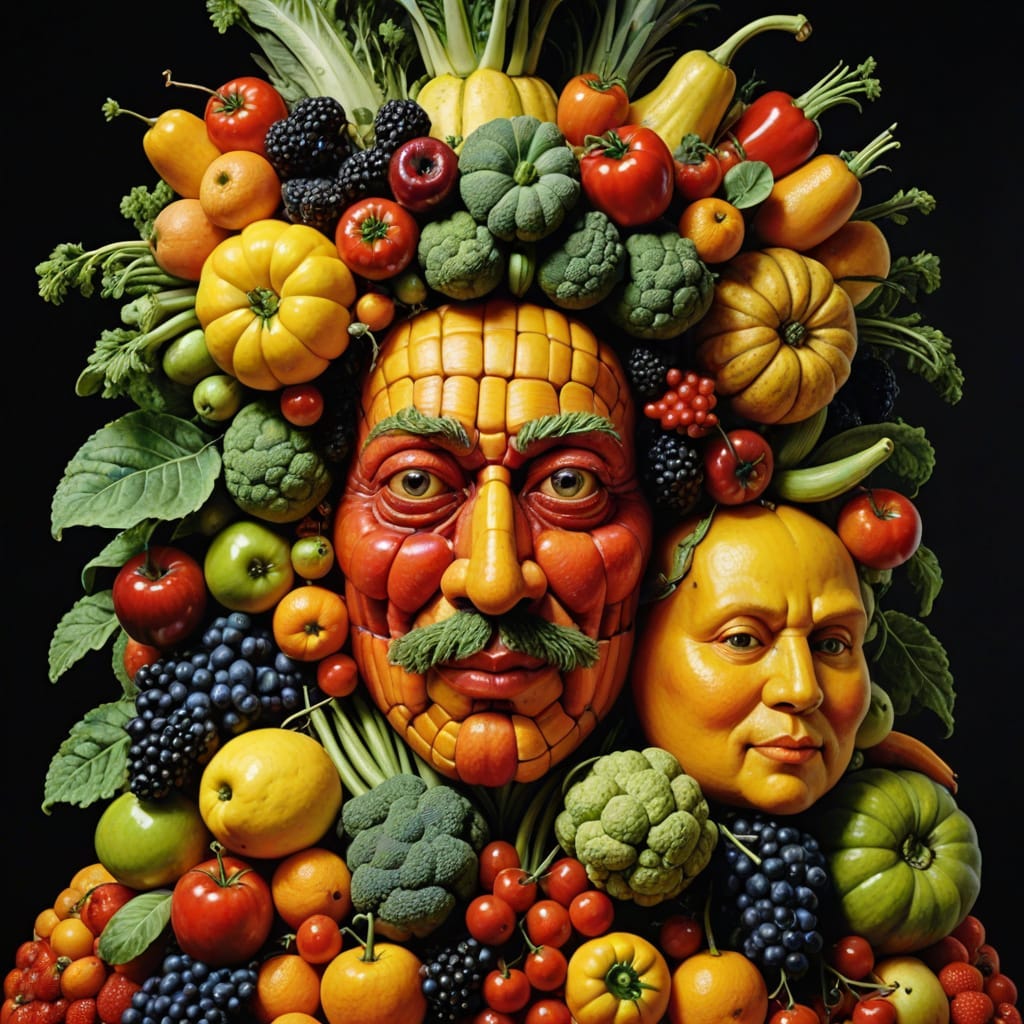
Have you ever tried to impress a date by casually name-dropping ascorbic acid? If so, congratulations on both your boldness and your probable solitude that evening. Vitamins have become part of our everyday vocabulary — like “taxes,” “wifi,” and “please-pick-up-the-bread-on-your-way-home.” But it wasn’t always this way. Our relationship with vitamins has gone through multiple awkward stages, from ancient speculation to modern obsession. Grab your green juice (or your frothy cappuccino; no judgment here), settle in, and let’s time travel across centuries of nutritional revelations, blunders, and near-saintly devotion to these humble molecules. Spoiler: We do talk about controversies, bizarre legal restrictions, miracle cures, and that oh-so-mysterious melatonin.
A Brief Stumble in the Dark (Before Vitamins Got Their Name)
Long before we had words like “vitamin,” people generally believed that good health was dictated by four “humors” sloshing around the human body. “Eat your vegetables” was likely replaced by “Balancing your humors is important,” which is nowhere near as catchy but possibly sounded cooler if you threw in some dramatic medieval chanting. Yet even without the formal concept of vitamins, folks had hunches about certain foods preventing disease. Ancient civilizations weren’t clueless: Roman soldiers were fed onions and garlic for strength, while the Greek physician Hippocrates recommended diets that would sound suspiciously like wellness influencers today. They just didn’t know it was the vitamins doing the heavy lifting.
Of course, they also had no Netflix to watch, so rummaging through plants for medicinal benefits was a decent pastime. However, knowledge remained patchy and anecdotal, handed down in cryptic scrolls or folk remedies. Nobody had recognized that an odd, invisible component in foods was powering our immune systems and helping nails grow, so they chalked it all up to humors, or possibly an ancient version of disclaimers: “Eat these lentils. You’ll either be healthier, or you’ll meet the gods sooner.”
The Scurvy Saga and the Discovery of Vitamin C
Fast-forward to the Age of Sail, where ships were filled with hopeful explorers, elaborate hats, and a pesky disease called scurvy. Sailors suffering from scurvy looked like they’d spent way too long in a Tim Burton movie — bleeding gums, loose teeth, general malaise. Not a fun time. Then came one of humanity’s greatest eureka moments in nutrition: Scottish physician James Lind ran an experiment in 1747 that proved citrus fruits could cure scurvy. Imagine the fanfare: “Ladies and gentlemen, let’s celebrate the magical power of lemons!” That was essentially the discovery of vitamin C — though Lind didn’t call it vitamin C; nobody had invented the term yet.
But the concept took decades to catch on, probably because humanity enjoys ignoring good ideas. In the 1920s, scientists finally isolated vitamin C, giving it a neat label and making citrus fruit farmers around the world extremely happy. If you’re curious about more details on that scurvy experiment and its modern implications, check out NIH: https://www.ncbi.nlm.nih.gov/books/NBK66210/. We may laugh at how long it took, but if there’s one thing we humans are good at, it’s procrastination.
The Modern Vitamin Explosion
Once researchers discovered a single vitamin, it was like prying open a treasure chest and yelling, “Woo-hoo, freebies!” Scientists raced to identify more vitamins, and the naming convention soon became an alphabet soup: A, B, C, D, E, K… and a bunch of B’s with numbers attached, because apparently the letter “B” demanded a big, boisterous family. Suddenly, everyone was hunting for the next big deficiency: rickets, beriberi, pellagra. Some of these diseases sounded more like exotic islands than debilitating conditions, but the reality was grim. The more science advanced, the more we realized that vitamins were absolutely essential for human health — and that they’d been the hidden heroes behind many age-old remedies.
Between the 1930s and the 1950s, vitamin supplements started hitting the shelves. People believed they’d found the magic key to vitality. This was partly driven by a marketing frenzy: If a little bit of vitamin X is good, then a triple dose must be even better, right? Not necessarily — but more on that later. For now, let’s just marvel at how quickly vitamins went from “mysterious, intangible factor” to “everyone’s daily breakfast companion.”
Have Vitamins or Their Effects Changed Over Time?
Vitamins themselves haven’t shape-shifted into different chemical compounds while we slept. Vitamin C from a lime in 1750 is still the same vitamin C in your grapefruit this morning. The big difference is our understanding. We discovered how these nutrients function at a cellular level, how they interact with enzymes, and what happens if we go overboard. If you showed a 14th-century person a modern vitamin bottle, they might assume it’s some kind of powerful sorcery. In a sense, they wouldn’t be far off — except it’s all grounded in chemistry and biology now.
So, it’s not that vitamins have changed, but rather that we’ve grown more sophisticated in how we measure them and how we incorporate them into our diets. Think of it like reading a complicated novel in the dark. The novel doesn’t rewrite itself; you just get a better flashlight.

Forgotten and Rediscovered Vitamins
A big question: Have we learned what some vitamins do and then forgotten what others do? To an extent, yes. Vitamin B17 (sometimes referred to as “laetrile,” famously derived from apricot pits) is one example that soared to super-controversial prominence, hailed by some as an anti-cancer miracle and debunked by many scientific studies. Then there are essential minerals like iodine, crucial for thyroid function, that had entire public health campaigns behind them (like the iodized salt movement). Now, it’s so normal to have iodine in salt that hardly anyone remembers the big push of the 1920s.
We also have a subtle interplay between vitamins and minerals that sometimes gets overlooked. For instance, zinc is essential for immune function, but how many times have you found yourself in a casual chat about zinc’s synergy with vitamin A? Probably never, because that’s not standard dinner conversation. Over time, some of these crucial interactions slip out of popular discourse, only to be rediscovered when new research hits the headlines. So yes, we occasionally drop a few pages out of the giant “Vitamin & Mineral Encyclopedia,” only to pick them up again when science taps us on the shoulder.
Have Our Bodies Evolved, or Is It Just Our Knowledge?
In the grand evolutionary timeline, humans haven’t changed drastically in the past few thousand years. We still have the same basic nutritional needs. If anything, we might see subtle genetic adaptations depending on diet (like lactose tolerance), but the fundamental vitamin requirements remain pretty steady. What has evolved dramatically is our collective knowledge — and perhaps our environment. We no longer have to roam the savannah for specific plants to fix a deficiency. We can dash to the local grocery store or even get vitamins delivered to our doorstep at 2 a.m. That’s less about biology evolving and more about us being really good at building sophisticated delivery networks. Evolution might tweak a gene over thousands of years; but we’ve mastered next-day shipping. Who’s the boss now, natural selection?
Vitamins vs. Man-Made Drugs: Who Wins?
In the ring tonight: Vitamins on one side, man-made drugs on the other. Which is more effective for the same condition? It’s not really a fair fight because vitamins typically address deficiencies or act as maintenance for bodily functions, while pharmaceutical drugs often target specific pathogens, symptoms, or complex diseases. Sometimes, though, vitamins can indeed rival or complement medical treatments. For example, high-dose vitamin D is used in certain bone diseases and might be as effective as some prescription meds in correcting deficiency-related conditions. But does that mean you can pop vitamin D pills to conquer all ailments from migraines to heartbreak? Probably not.
The synergy often comes from combining healthy nutrition (or supplementation, if needed) with medical interventions. A classic example: Iron supplementation can treat iron-deficiency anemia more effectively than a random pill for “generic fatigue.” But if your anemia stems from something else entirely, you might need a prescription medication. Bottom line: Vitamins are essential for overall health, and in some deficiency cases, they’re definitely more targeted and effective than a man-made drug. But if you have a raging infection or a broken leg, best to see a doctor rather than just munch on kale.
Overdosing and Other Scary Tales
Picture this: You’re feeling virtuous, so you take a handful of vitamin supplements every morning. More is better, right? Actually, no. Some vitamins, such as B and C, are water-soluble. Any excess usually washes out with your urine, though your wallet might feel the real flush. But the fat-soluble vitamins — A, D, E, and K — can build up in your body, leading to toxicity if you take them in high, prolonged doses. Vitamin A toxicity can cause symptoms from headaches to severe liver damage. It’s like the nutritional version of buying shoes: One pair is great, but 200 pairs might lead to your downfall (or at least a confused credit card company).
So yes, certain vitamins are dangerous in the wrong doses. This is especially relevant in countries where supplements aren’t heavily regulated, leading enthusiastic folks to self-prescribe “mega doses” based on dubious online advice. Always pay attention to recommended daily allowances, and consult healthcare professionals if you’re considering higher doses. Otherwise, you might end up posting frantic messages in health forums about why your hair is falling out — only to discover you’ve been chugging polar-bear-liver-level amounts of vitamin A.

Why All the Controversy?
Vitamins are controversial for several reasons:
- Wild Marketing Claims: Supplements are often marketed as cure-alls, which invites skepticism.
- Regulatory Gaps: In some countries, vitamins aren’t regulated as strictly as pharmaceuticals, leaving room for shady products.
- Research Confusion: One study claims vitamin E is a powerhouse antioxidant; another says it might increase certain risks in high doses. Contradictory headlines sow doubt.
- Financial Interests: The supplement industry is worth billions, and certain “celebrity doctors” have hopped on the vitamin bandwagon with questionable product lines.
Controversy also arises when vitamins are peddled as a replacement for legitimate medical treatment. While we should applaud the wonders of these essential nutrients, it’s the hype and misinformation that spark fiery debates. Some see vitamins as a miraculous fountain of youth, while others dismiss them as pricey placebos. The reality (like most nutritional issues) is more nuanced.
The Mysterious Melatonin
Melatonin is a hormone, often lumped into the “supplement” category, that helps regulate our sleep-wake cycle. It’s like the orchestra conductor that says, “All right, time to pack up your day and drift off to Dreamland.” Over time, modern life — especially those mesmerizing screens we stare at until midnight — disrupts our melatonin production. So people take synthetic melatonin to help them doze off.
Is it safe? Generally, short-term use is fine for many folks. It’s not technically a vitamin, but it does wind up in the same aisle as the vitamin gummies. And yes, it’s controversial in some places, partly due to the question of whether children should use it or if it should be prescription-only. If you’re interested in deeper research on melatonin, the Sleep Foundation has comprehensive resources: Sleep Foundation: https://www.sleepfoundation.org/how-sleep-works/melatonin-and-sleep. It’s one of those “miracle or menace” debates that keep swirling around nutritional supplements.
A Shout-Out to B12
Move aside for a moment, vitamin C. Let’s give the spotlight to B12. This vitamin is crucial for nerve function, blood cell production, and DNA synthesis. A deficiency can cause fatigue, neurological issues, and more gloom than a teenager forced to do household chores. B12 is mainly found in animal products, so strict vegans or vegetarians risk deficiency if they don’t seek fortified foods or supplements. Interestingly, many people over 50 also have reduced ability to absorb B12 from food. So you see older folks munching on B12-fortified cereal or sublingual tablets like they’re fancy breath mints.
What’s the fuss about B12, specifically? It’s one of the biggest deficiency concerns among plant-based eaters. Some wave it off as a pharma scare tactic, but the reality is your body needs consistent B12. If you’re ignoring that need for months or years, you could be in for a surprise (and not a good one). Also, B12 can sometimes be the hero in cases of pernicious anemia. For more details, the Linus Pauling Institute: https://lpi.oregonstate.edu/mic/vitamins/vitamin-B12 offers a treasure trove of research.
Paintings and Pears: Famous Art That Hints at Nutrition
Art history isn’t exactly brimming with paintings titled “Behold, Vitamin E.” But artists have captured the human relationship with food and health in countless still lifes and feasts. We can’t forget Giuseppe Arcimboldo’s surreal portraits made entirely of fruits and vegetables. While they didn’t specifically highlight vitamins, they were a creative nod to the importance of produce. Or look at those ornate Dutch Golden Age still-life paintings brimming with table spreads — lemons, grapes, oysters, and bread. Each painting might be showing off the painter’s skill, but they also inadvertently displayed the lavish diets of the wealthy, including (yes) the vitamin-rich foods they loved.

None of these paintings come with a snazzy banner reading, “Get your daily dose of vitamin C!” But they do remind us how food has always been woven into our cultural tapestry. People have always celebrated the nourishment that keeps them alive — even if they didn’t initially understand the microscopic heroes within. Next time you pass an art museum, consider that behind every luscious still life might lurk the story of scurvy, rickets, or some unmentioned deficiency of centuries past.
Why Are Vitamins Illegal in Some Countries?
“Illegal vitamins” might sound like an absurd band name, but in some places, certain supplements are indeed regulated to the point of being banned or restricted. It’s less about vitamins being inherently evil and more about how different countries classify them. Some nations treat high-dose supplements as pharmaceuticals, which means they can only be prescribed by a healthcare professional. Others have strict guidelines on how vitamins can be marketed. For instance, making a health claim like “Cures everything short of heartbreak!” might get a product yanked from shelves.
In parts of Europe, regulations can be much tighter than in, say, the United States. According to the European Food Safety Authority: https://www.efsa.europa.eu/, maximum allowable levels for various vitamins and minerals can differ drastically from what’s sold elsewhere. In places like Norway or Denmark, you might need a prescription for certain high-strength supplements that are freely available in the U.S. So, “illegal” might be a strong word, but definitely restricted or heavily regulated. It’s essentially a tug-of-war between public health authorities wanting to prevent overdoses and unscrupulous marketing, and the freedom of people to pop whichever vitamin they fancy.
Tantalizing Tidbits
- Vitamin D is nicknamed the “sunshine vitamin” because our skin produces it when exposed to sunlight. Yet many of us stay indoors, so deficiency is more common than you’d think.
- Pee that looks unnaturally bright yellow might just be you excreting excess vitamin B2 (riboflavin). It’s not necessarily a bad thing, but it can be startling if you weren’t expecting neon.
- Cod liver oil was forced on many children in past generations, with parents swearing by its vitamin D and A benefits. Some kids may still wake up at night in a cold sweat remembering that fishy taste.
- Vitamin K is absolutely crucial for blood clotting. Without it, the slightest paper cut could turn you into a living fountain of gore.
- Overfortification can lead to bizarre outcomes, like cereal that has so many added vitamins and minerals it resembles an alchemist’s concoction. Moderation, as always, is key.
- Global diets vary widely, but a big push in many developing countries is for staple foods like rice or flour to be fortified, fighting malnutrition on a massive scale.
An Invitation to Comment and Follow
We live in an era where new discoveries about nutrition surface every other week. One moment, vitamin E is the champion against aging; the next, it’s under scrutiny for potential risks. This can be dizzying, but it also underscores how science is a living, evolving process. Our bodies might not have changed drastically over the centuries, but our knowledge has skyrocketed. That’s both exciting and confusing — like having Netflix recommend a thousand shows and you’re paralyzed about which one to watch.
Found something here that tickled your funny bone or ignited your curiosity? Feel free to share your thoughts below. Let’s swap tales of the weirdest vitamins we’ve tried or the strangest health advice we’ve heard. Got a friend who insists on guzzling kale juice while chanting Tibetan throat-singing to “activate the vitamins?” We’d love to hear about that, too! And if you want more whimsical musings on health, nutrition, and life’s delightful oddities, don’t forget to follow. Comments and follows help keep the conversation (and the comedic rants) alive.

Art Prompt: A dreamlike impressionist painting of a tranquil body of water surrounded by soft greenery and gently swaying blossoms. The scene is bathed in diffuse, early-morning light that dances upon the water’s surface. Use delicate, loosely defined brushstrokes to blend pastel pinks, blues, and greens in a way that evokes fleeting reflections and shimmering movement. Capture the fragile beauty of petals drifting across the water, hinting at serenity and graceful transience. Let the foreground include clusters of floating leaves and blossoms, painted with lively, quick dabs that suggest they are momentarily captured before shifting in the breeze. Avoid sharp outlines; instead, aim for a luminous haze that communicates an ethereal, otherworldly calm.